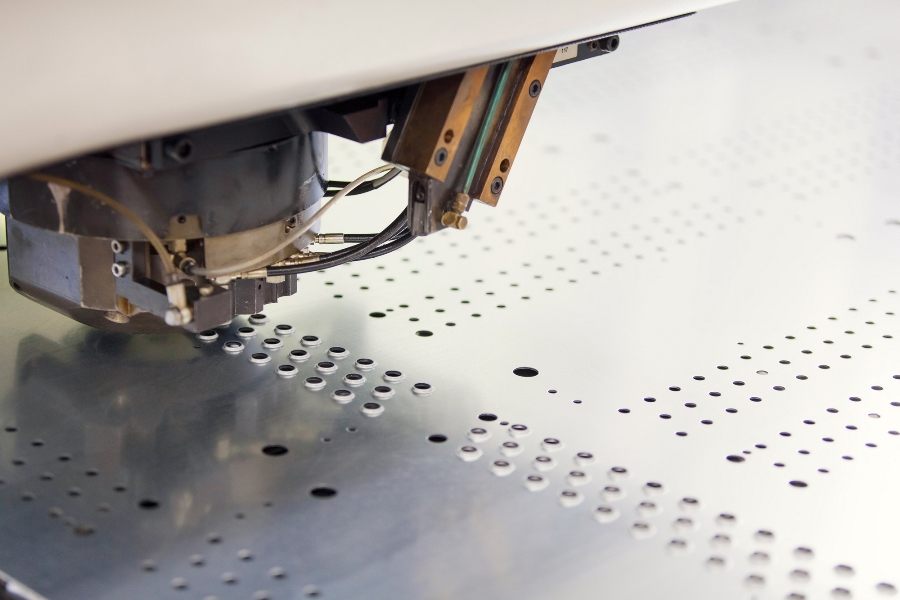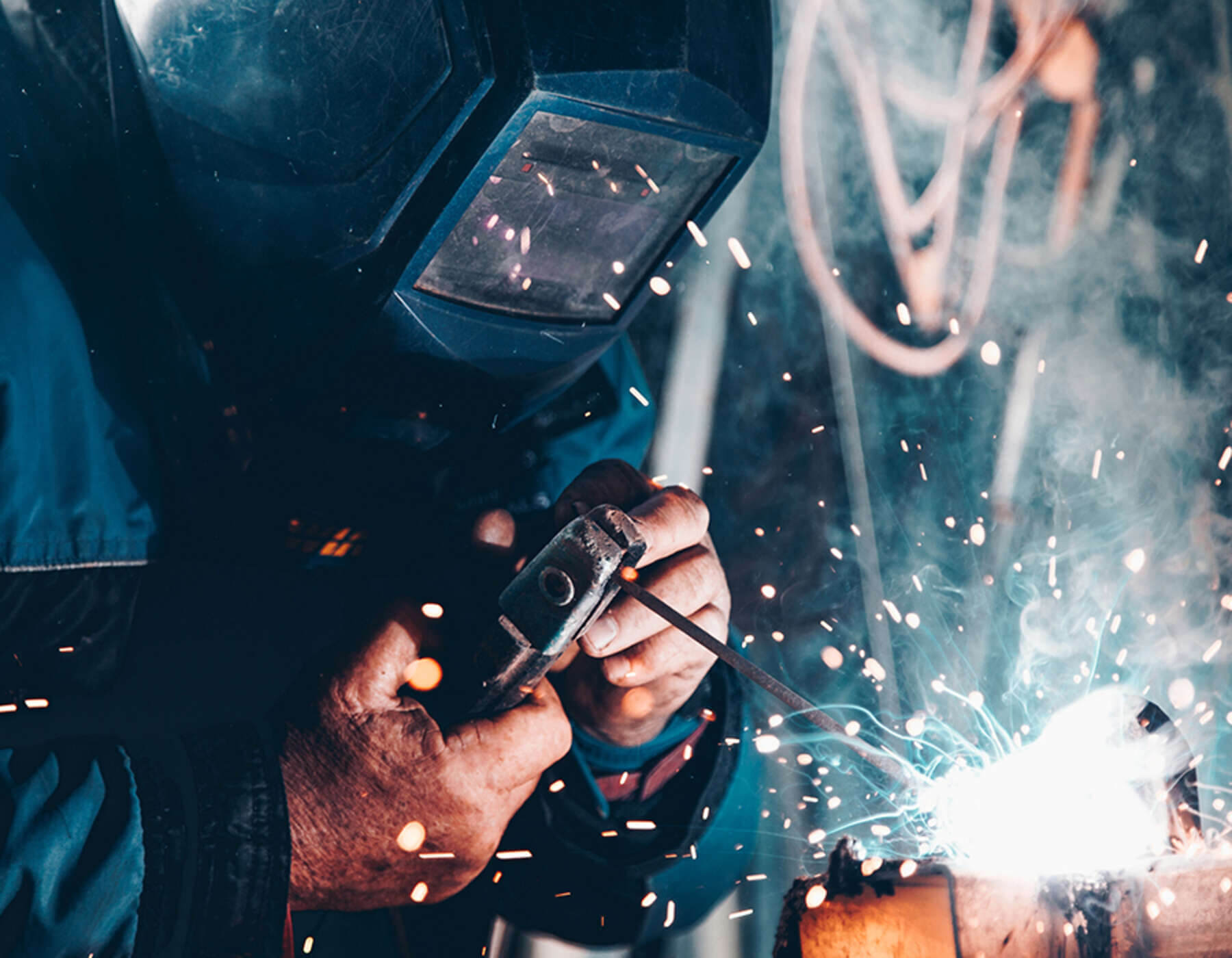
Metal punching is a widespread process that the team at Morfabrication carries out regularly, working on both small- and large-scale projects (check out some of our case studies online to view our latest work).
Ultimately, metal punching is a sheet metal fabrication service that uses machinery and tools to press a form onto the metal surface using pressure from the punch steel tool.
You can then remove the punched piece from the sheet metal, leaving you with the final product.
Due to the intricacies of setting specifications and measurements, we advise always working with credible sheet metal fabricators to ensure high quality and consistency across every component and project.
This post examines the benefits of the metal punching process and why it could be suitable for your next project.
What is metal punching?
Sheet metal fabrication services are wide and varied, and each process is selected based on the project’s specifications and requirements.
This means that sheet metal will undergo several different fabrication techniques to achieve the desired end product, one of which potentially involves punching.
A punching press is primarily used to punch holes into sheet metal (impressing a form on the surface of the metal using pressure). The steel punch pulses through the steelwork piece, creating a clean and accurate hole. However, punching press machinery can also be used to cut large panels, form louvres, create embossing, and manufacture more complex shapes.
Various sizes and shapes of steel punches are available, resulting in different sizes and shapes of holes achievable for the sheet metal in question.
Often used in the manufacturing of components suitable for:
- Medical industry – medical equipment, furniture.
- Automotive – chassis and body components.
- Commercial – HVAC systems.
- Construction industries – brackets, panels for cladding, and roofing.
Types of metals that are suitable for punching include:
- Steel
- Iron
- Copper
- Aluminium
Process of metal punching
Set the press to the shape of the punch/die.
Clamp the sheet metal in place to avoid any misalignment with clamps and fixtures.
Apply the press, exerting pressure on the metal.
The punch die is forced through the sheet metal, forming a hole (a process also known as shearing).
The press will cut out the desired parts of the sheet metal.
There will be scrap metal pieces (slugs) left over from punching, which are often collected and recycled where possible.
(Note: other steps may be required to smooth out edges).
Punching and laser cutting techniques allow sheet metal fabricators to meet even the most demanding design requirements, providing customers with quality and flexibility.
With all fabrication processes, it is vital that you work with a professional team that has the skills and experience across your industry sector to provide you with confidence that you will receive a high-quality finished product.
Benefits of metal punching
- Cost-effective (especially for large production runs)
- Fast and efficient process
- No custom tools are required
- It can also form dimples and bridge lances
- Can support high production volumes
- Can punch steel, iron, copper, and aluminium
- Can create accurate and repeatable holes in sheet metal
- Often reduces the need for secondary forming operations
- Versatile, consistent, and produces high-quality results
- It is an accurate process that is excellent if you need tighter tolerances
- Can automate the system for large production runs
- Suitable for various metals
- Technique/process can be carried out by hand or via a machine (punch press)
- Working with the right machinery, you can achieve a high-quality and consistent finished product
Note: A punching press is not suitable for large metal sheets as it will be unable to be securely clamped in place during the forming process.
You will also need to be aware of the material thickness and tensile strength, as this will affect the overall outcome of the punch.
It is also better at producing simple shapes and, in some instances, can leave burrs or deformations. However, a skilled and experienced fabrication team will be able to offer alternative solutions to this and other processes to transform the burrs and eradicate deformation.
Sheet metal fabrication near me
Punching sheet metal is the most cost-effective way to create holes consistently and to a high standard in sheet metal.
However, when looking for a specialist metal sheet fabricator near you, make sure to check out their reviews online; what other projects have they worked on? Do they hold any specific accreditations or quality marks?
Do they work on the fabrication process at all stages, or are elements outsourced, and if so, to who? Are the team trained and experienced, and are they the right fit for your project to work with you from start to completion?
It’s essential you do your research and work with a team that can not only carry out the job but who you can work with in a professional, collaborative way.
The Morfabrication team is always on hand for any project request or question you may have regarding metal fabrication.
We manufacture and work with both large and small metal sheets, working to your specifications and ensuring high-quality returns.
To find out more and to see how we can help you with your next metal fabrication project call us on 0191 8162718 or email your specifications to info@morfabrication.com.
